Grapes are a delightful fruit and a lucrative agricultural venture, especially in India, where the climatic conditions are conducive for grape cultivation. With a myriad of grape varieties to choose from, farmers can optimize both yield and profit. However, not all grapes are created equal regarding market demand, ease of growth, and profitability. That’s why knowing which grape varieties offer the best return on investment is crucial. In this blog, we will delve into the top 20 grape varieties that are popular and highly profitable to grow in India.
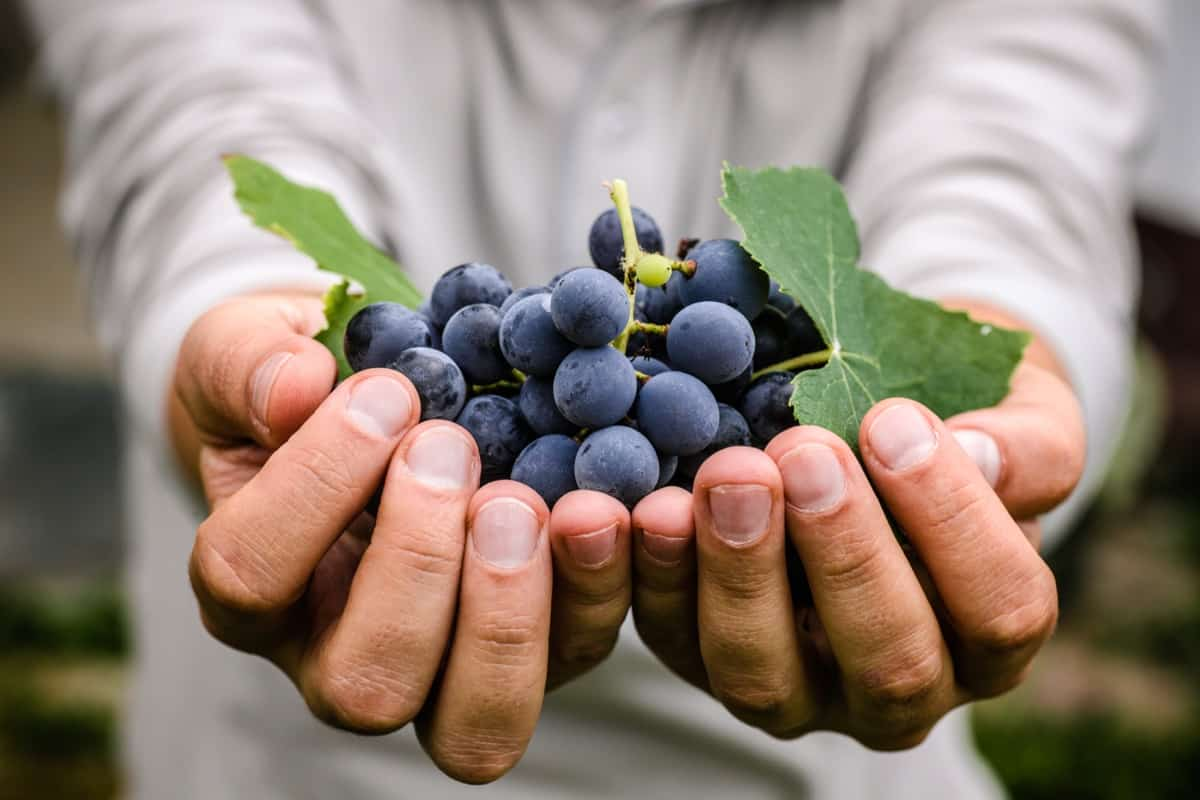
Overview of Grape Production in India
India’s grape cultivation flourishes in warm to temperate climates, specifically in elevations above 250 meters. State-of-the-art packhouses equipped with automated forced air systems are prevalent in major production areas, enhancing quality and safety via residue monitoring and product traceability. Among over 20 grape varieties, only 12 achieve commercial prominence and are categorized into four types: colored and white, each further divided into seeded and seedless.
Thompson Seedless dominates the landscape, covering nearly 79% of the grape-farmed area in 2021. Maharashtra spearheads grape production, contributing over 70% of the national yield, followed by states like Karnataka and Tamil Nadu. Economically, grapes are significant, covering 2.3% of India’s total fruit-cultivated area. Additionally, India exported approximately 267,950 MT of grapes in 2022-23, generating roughly 313.7 USD million in revenue.
Quick Fact About Grape Growing in India
Grapes, naturally categorized as berries, represent a diverse family with over 50 species and more than 7500 varieties grown globally. The vine they grow is equally impressive, capable of reaching lengths exceeding 45 feet. A single plant can yield up to 35-40 clusters of grapes, making them a highly prolific fruit. The grapevine leaves are notably large, green, and partially lobed, serving as another defining characteristic of the plant.
Nutritionally, grapes are primarily water-based and low in calories, making them snack for weight management. They are a powerhouse of vitamins and minerals, supplying significant amounts of Vitamin A and B vitamins and essential minerals like iron. Grapes are not only delicious but also have multiple health benefits. They offer therapeutic advantages for various ailments, including asthma, digestive issues, and kidney disorders. Furthermore, the seeds of grapes are particularly healthful due to their high antioxidant, which helps fight off free radicals in the body.
Techniques for Grape Cultivation in India
- Morphological Features: Grapevines feature helices and tendrils, which are modified inflorescences. The leaves are heart-shaped, large, and have prominent veins. The shape, color, size of leaves, fruits can vary depending on the specific variety.
- Grape Varieties: India grows over 20 varieties of grapes, but only 12 are commercially significant. Thompson Seedless and its clones dominate 55% of the total cultivated area. Bangalore Blue, Dilkhush, and Anab-e-Shahi each constitute around 15% of the area.
- Key Producing States: Maharashtra is the leading grape producer, notably in districts like Nasik, Pune, and Ahmednagar. Other major producing regions include Karnataka, Andhra Pradesh, and Tamil Nadu.
- Climate and Soil Requirements: Grapes are versatile and can grow in temperate, tropical, and sub-tropical climates. The ideal climate is Mediterranean. Soil should be well-drained, sandy loam to loamy, with a pH below 8.7. Poorly drained alkaline soils are not suitable.
In case you missed it: Grape Vine Pruning, Defoliation, and Thinning for Great Yield

Cultivation Techniques
- Propagation Methods: Hardwood and Greenwood cuttings, grafting, and layering are common. Seeds are rarely used.
- Training Systems: Bower, Kniffin, Telephone, and Head systems are employed depending on factors like climate and variety.
- Irrigation and Fertilization: Irrigation varies by region, soil type, and grape variety. Drip irrigation is common. Fertilizer schedules include using urea, superphosphate, and potash, among others.
- Weed and Pest Management: Weeds are manually or mechanically removed, and chemical herbicides like glyphosate are sometimes used. Pests like thrips and wasps are managed with insecticides like Dimethoate.
- Harvesting and Yield: Harvesting time and methods are variety-specific. Yield varies, with 20-25 tonnes/ha considered good. Taste is the key indicator of ripeness.
- Storage and Shelf Life: Grapes have a one-week shelf life at room temperature but can last up to 60 days under optimum conditions (92–96%), depending on the variety.
Top 20 Grape Varieties to Grow in India
Thompson Seedless
Thompson Seedless grapes are small to medium-sized, oval-shaped grapes with pale green, almost translucent skin. They are versatile and used for table consumption, raisin production, white wine, and grape juice. In India, they occupy about 55% of the grape cultivation area, primarily in Maharashtra, Karnataka, and Andhra Pradesh.
Nasik in Maharashtra is a significant region for grape cultivation. Thompson Seedless grapes are appreciated for their sweet, juicy flesh and seedless nature, making them a popular choice for consumers and food processors. They are considered a high-yield variety, with an average yield of 20 to 25 tonnes per hectare.
Flame Seedless
Flame Seedless grapes are a popular and versatile variety in India, known for their vibrant red color and round to oval shape. They are small firms in tight clusters, making them convenient for consumption. They are popular for fresh consumption, salads, desserts, and garnishes, and their sweet yet tart flavor makes them suitable for making grape juice.
In case you missed it: Mastering the Art of Grafting Techniques for Grape Vine
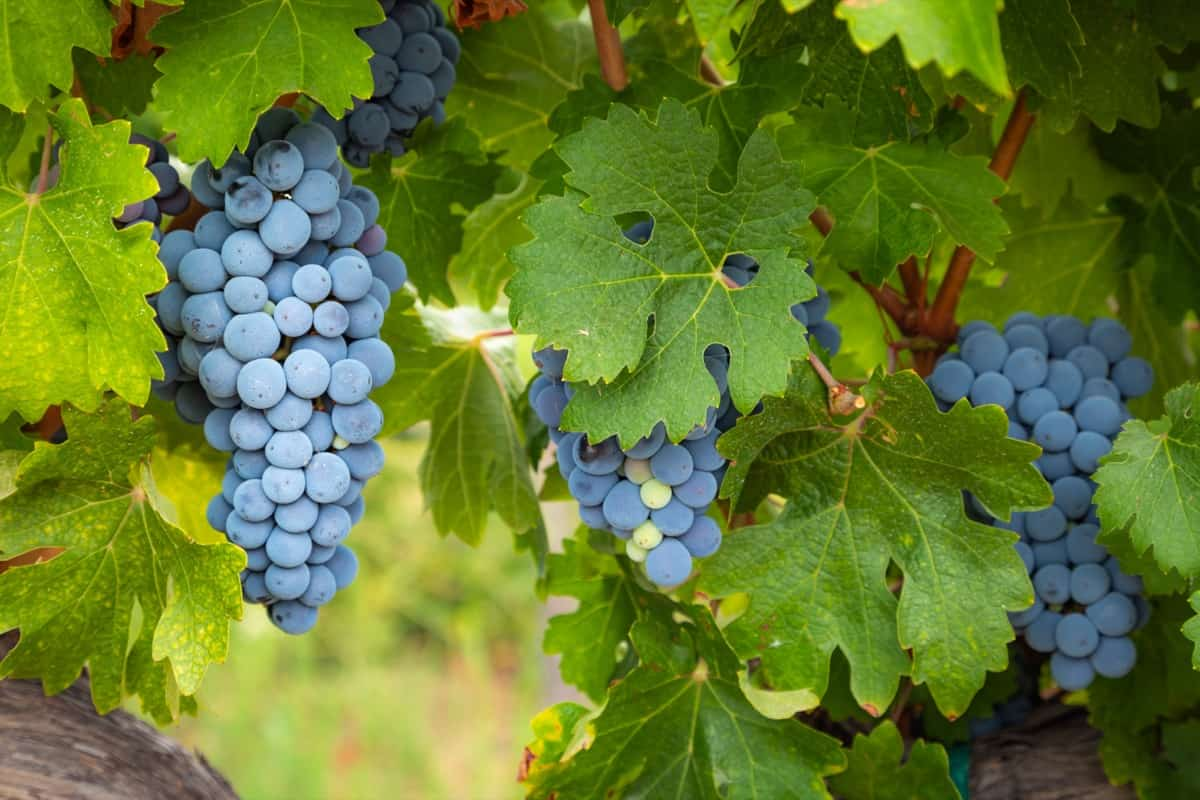
Flame Seedless grapes are commercially significant due to their early ripening and lower susceptibility to common grape diseases. They are primarily cultivated in Maharashtra, Nasik, Pune, and Karnataka, with pockets of cultivation in Bangalore and Kolar. The grape variety has found a robust domestic and international market due to its seedless nature, vibrant color, and sweet taste, enhancing its economic value for Indian farmers.
Ruby Seedless
Ruby Seedless grapes are medium-sized, oval-shaped grapes with a vibrant red to dark purple hue. They are popular in various culinary applications, such as salads, desserts, and jams. They are primarily consumed as table grapes and are grown in India’s Maharashtra, Karnataka, and Andhra Pradesh states. They thrive in well-drained sandy loam to loamy soil with a pH below 8.7. The Nasik and Pune regions in Maharashtra, Kolar, Bangalore in Karnataka, and Rangareddy and Medak in Andhra Pradesh contribute to high-quality production.
Sultana (Thompson’s Premium)
Sultana grapes, or Thompson Seedless in the U.S., are small to medium-sized, oval-shaped, pale green grapes with translucent, thin skin. Due to their high sugar content, they are popular for fresh consumption and are used in various industries, including juice production and winemaking. Sultana is one of the world’s most planted grape varieties, with its production being most extensive in India, particularly in Maharashtra, Karnataka, and Andhra Pradesh. The grape variety is primarily grown in Nasik, Maharashtra, and thrives in districts like Pune, Ahmednagar, and Sangli.
Muscat
Muscat grapes in India are renowned for their appearance, with a range of colors from light green to deep purple and a slightly oval-shaped shape. Due to their high sugar content, they are primarily used in making wine, particularly dessert wines. They are also enjoyed fresh or used in culinary applications like jellies and sauces.
The Indian Muscat grape, or Gulabi Syn, shares characteristics with the original Muscat family and is primarily used for wine production. Muscat grapes are cultivated in regions with a Mediterranean climate, primarily in Maharashtra, specifically in the Nasik region, known as the Wine Capital of India. Nasik provides ideal climatic conditions, such as moderate temperatures and low rainfall, contributing to the grape’s unique flavor profile.
Shiraz
Shiraz grapes, a dark purple to almost black grape variety, are used primarily in winemaking for their intense flavors, often incorporating blackberries, plums, and spices. They are also used in blends to add richness and body to lighter wines. Shiraz grapes are growing in India, particularly in Maharashtra and Karnataka, with Nasik, the “Wine Capital of India,” seeing significant cultivation. The terroir in these states is particularly conducive for growing this grape variety, replicating conditions in its origin regions like the Rhône Valley in France.
In case you missed it: How to Grow Grapes Organically in Maharashtra: Step-By-Step Cultivation Process and Production Management
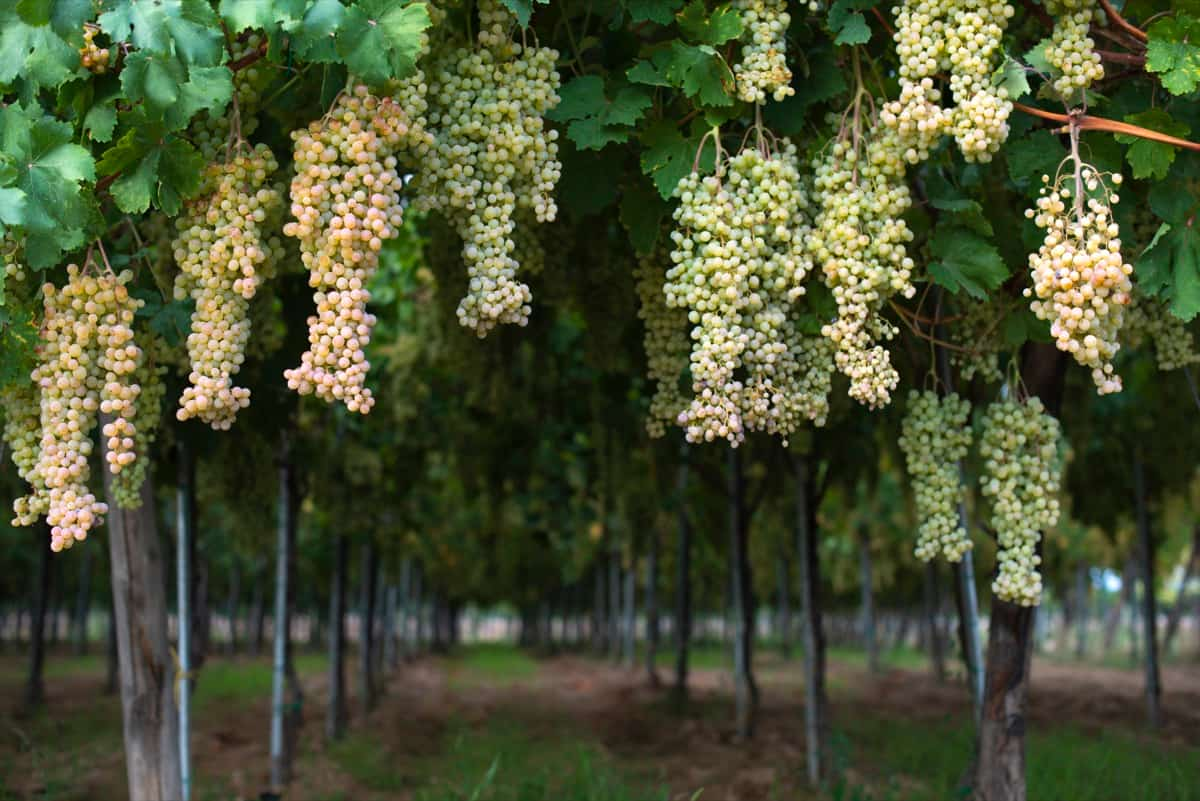
Cabernet Sauvignon
Cabernet Sauvignon, a grape variety with small, dark, and thick-skinned berries, is primarily used for red wine production in India. Its rich flavor profile includes black currant, plum, and spice notes, and its high tannin content makes it ideal for aging. The grape is primarily grown in regions like Nashik in Maharashtra, Nandi Hills in Karnataka, and some parts of Himachal Pradesh, which offer a temperate-to-cool climate suitable for this grape variety. The grape has found a growing market in India, particularly among younger wine enthusiasts, and its adaptability to Indian terroirs promises a promising future for this grape variety.
Merlot
Merlot grapes, known for their deep blue-black color and rounded shape, are popular for winemaking in India. They are used to create wines with lush textures, black cherry, and herbal notes. Merlot is often blended with Cabernet Sauvignon to enhance complexity. Although less commonly grown in India than indigenous and international varieties, some vineyards in Nasik, Maharashtra, and the Nandi Hills region of Karnataka are exploring Merlot cultivation. Primary grape-growing regions like Nasik and Karnataka have successfully adapted Merlot grapes to Indian soil and climate, though efforts are still nascent.
Pinot Noir
Pinot Noir grapes are small, thin-skinned, and cone-shaped, resembling a pine cone. They are known for high-quality red wines with various flavors, including cherry and earthy notes. It is less common in India but is gaining traction, mainly cultivated in regions like Nasik and Bangalore. The grape is sensitive to climate and soil, requiring precise viticultural methods, and responds well to India’s diverse microclimates, particularly in temperate regions.
Chardonnay
Chardonnay grapes, with a greenish-yellow hue, are used in winemaking and can range from buttery to citrusy. They are grown in regions like Nasik in Maharashtra and Nandi Hills in Karnataka, replicating the climate of their original Burgundian habitat. India’s production of Chardonnay is growing, with a growing recognition for its unique tropical notes. The grape is becoming more important for domestic consumption and export in India, potentially expanding India’s global wine landscape. The production volume is still growing but is gaining recognition for its unique tropical notes.
Sauvignon Blanc
Sauvignon Blanc, a grape variety originating in India, is known for its pale yellow hue and high acidity, with flavors including green apple, lime, and tropical fruits. The grape is primarily used for winemaking in Nasik in Maharashtra and Nandi Hills in Karnataka. These regions provide this grape variety’s ideal terroir and climate, contributing to its unique Indian characteristics. The Wine Capital of India, Nasik, is a key area for Sauvignon Blanc cultivation, as it offers the perfect blend of soil pH, temperature, and moisture.
In case you missed it: How this Farmer Making 60 Lakhs from 6 Acres Organic Grape Farm: Organic Grape Cultivation Sucess Story in India
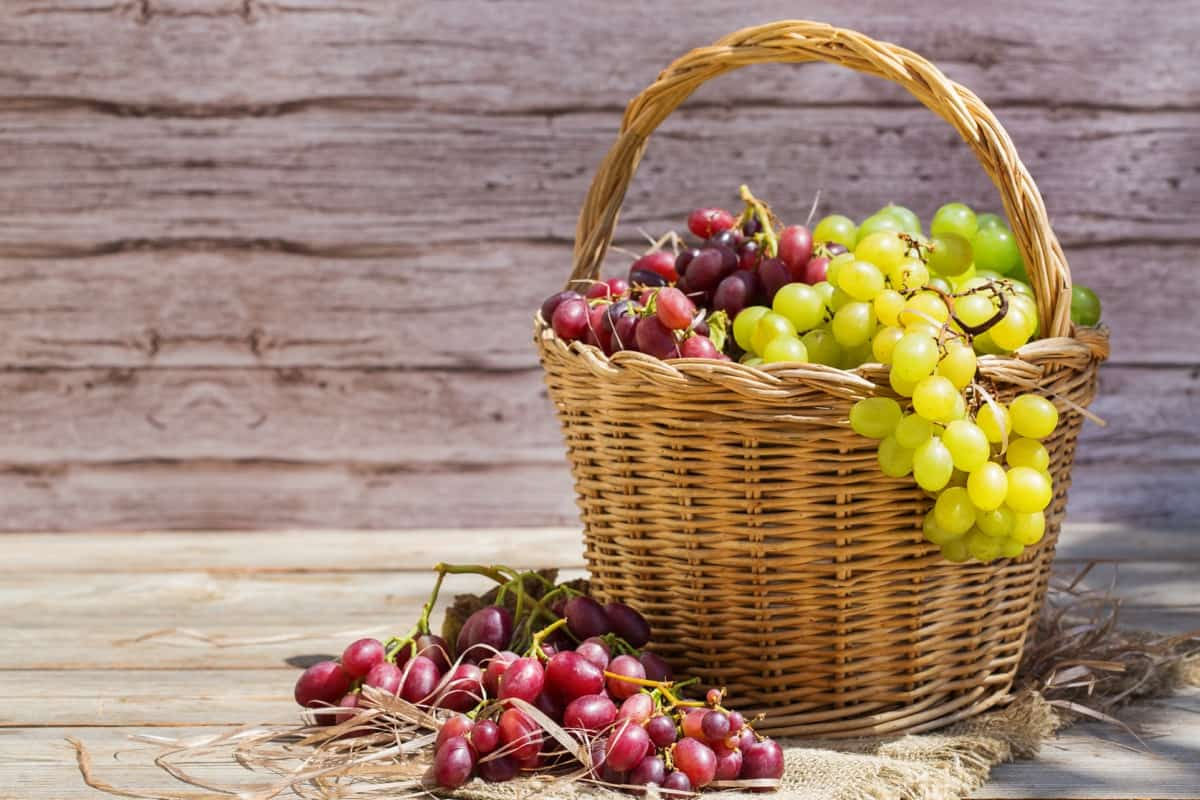
Chenin Blanc
Chenin Blanc grapes, with their thin skins and greenish-yellow color, are used in winemaking for their ability to produce a wide range of wines. Historically more prevalent in Europe, Chenin Blanc has found a place in Indian viticulture due to its adaptability and variety of styles. Typically grown in Maharashtra, particularly in the Nasik region, it is also in Karnataka and Andhra Pradesh. This grape variety is used for light, fresh, and occasionally dessert wines. The grape’s growth has been noted in Karnataka and Andhra Pradesh.
Colombard
Colombard grapes are small to medium-sized with a pale green-yellow hue and high acidity, ideal for winemaking. Traditionally used for Cognac and Armagnac in France, they have gained recognition for table and white wines with fruity flavors. Located mainly in the Gascony region of southwestern France, Colombard is also grown in the United States, particularly in California. With the Indian wine industry’s growing prominence, it is slowly entering India.
Gewürztraminer
Gewürztraminer grapes, with pinkish-red to light-red skin, are used primarily in wine production for their aromatic richness, offering a bouquet of lychee, rose, and tropical fruits. They range from dry to sweet and are often paired with spicy foods or complex cuisines. However, not a traditional hub, cultivation in India is slowly gaining traction in regions like Nasik and parts of Karnataka due to its versatility in temperate and slightly tropical conditions.
Riesling
Riesling grapes, small to medium-sized with a green-yellow hue, are known for their translucent skin and high acidity. They are for producing high-quality white wines, ranging from sweet to dry, with strong aromatics and high acidity. Although less commonly grown in India, the cooler regions of Himachal Pradesh and Kashmir show promise for Riesling cultivation. The grape adapts well to different terroirs, particularly cooler climates, where it can develop its characteristic flavors and produce a wide range of wine styles.
Sangiovese
Sangiovese grapes, medium to small, are used primarily for making wine, particularly in classic Italian wines like Chianti and Brunello di Montalcino. Depending on their location, they have a conical shape and can have sour red cherries or earthy tones. They are gaining traction in India, particularly in Maharashtra and Karnataka, known for their wine production. The primary regions for cultivating Sangiovese grapes are Nashik and Nandi Hills.
Tempranillo
The Tempranillo grape, a deep, dark red variety, is primarily used in winemaking and is the backbone of Spanish red wines. Its flavors include plum, tobacco, and vanilla. Although less popular in India than indigenous varieties or internationally recognized grapes like Cabernet Sauvignon, it is gaining traction in regions like Nashik and Bangalore due to their favorable climates. Currently, it is cultivated in the wine belts of Maharashtra and Karnataka.
Barbera
Barbera grapes in India are a deep ruby color, almost purple in hue, with medium-sized berries and thick skin. They are primarily used for winemaking, producing wines with rich color and flavor, lower tannins, and zesty acidity. Although less commonly grown in India than indigenous or internationally recognized varieties like Syrah or Cabernet Sauvignon, pockets of vineyards in Maharashtra and Karnataka are experimenting with this grape variety. The tropical to sub-tropical climate in these regions provides a suitable growing condition for Barbera grapes.
Nebbiolo
The Nebbiolo grape, originating from the Piedmont region of Italy, is a small, thick-skinned grape with a deep red to purple hue. It is primarily used in high-quality red wine production due to its complex flavors and high tannin content. The most renowned Nebbiolo wines are Barolo and Barbaresco, known for their depth and aromatic complexity. Despite its origins, Nebbiolo is still a niche grape variety in India, primarily grown in the Nashik Valley and parts of Karnataka.
In case you missed it: How to Control Pests and Diseases in Grapes: Causes, Symptoms, Chemical, and Biological Management
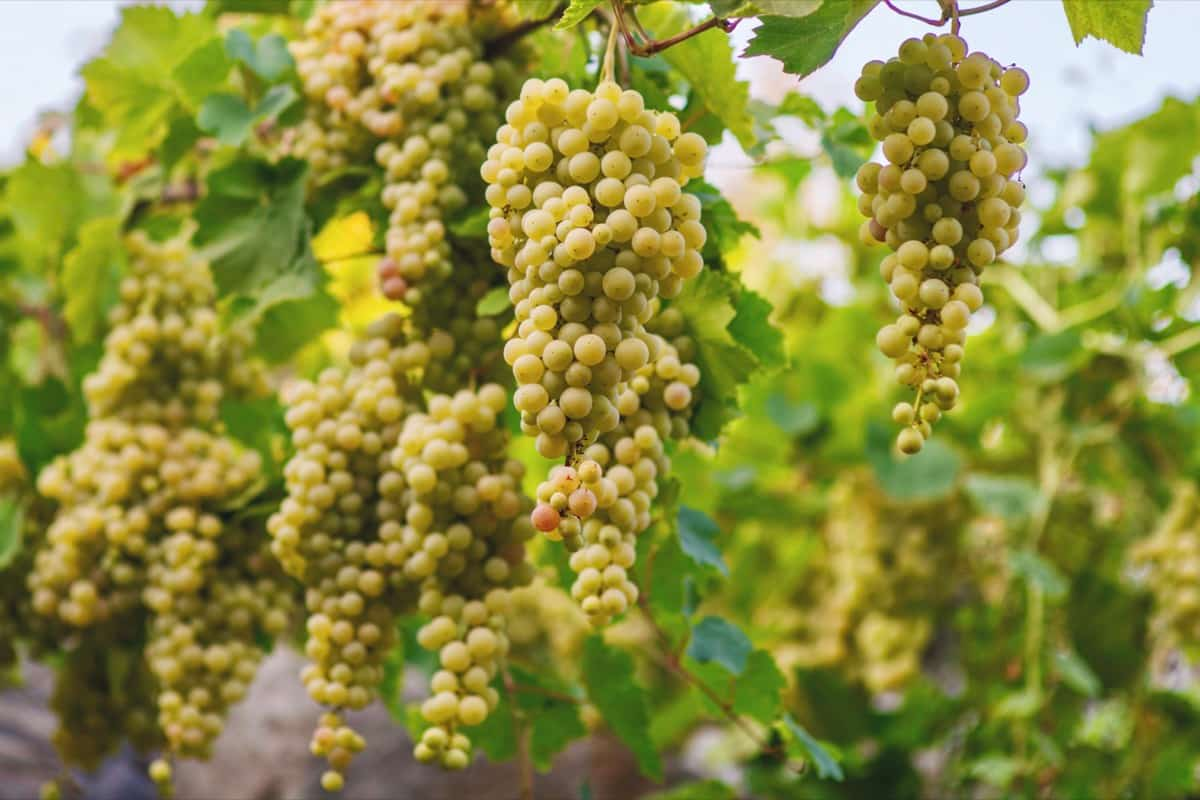
Petit Verdot
Petit Verdot grapes are small, thick-skinned, and richly pigmented, with compact clusters. They are used as a blending grape in Bordeaux-style wines, adding color, tannin, and a spicy, floral aroma. Although less commonly used in single-varietal wines, they produce deeply colored, richly flavored wines with black fruits and violets. Production in India is limited but is gradually gaining interest, particularly in Nashik in Maharashtra, to create unique varietal characters.
Conclusion
In India, grape cultivation offers diverse opportunities for high profits due to a wide range of suitable varieties. Key types like Thompson Seedless, Bangalore Blue, and Anab-e-Shahi dominate the market, but exploring lesser-known varieties can also yield substantial financial gains for farmers.
- Types of Pesticides Used in Agriculture: A Beginner’s Guide
- Economical Aquaculture: A Guide to Low-Budget Fish Farming
- 15 Common Planting Errors That Can Doom Your Fruit Trees
- How to Make Houseplants Bushy: Effective Tips and Ideas
- Innovative Strategies for Boosting Coconut Pollination and Yield
- Pollination Strategies for Maximum Pumpkin Yield
- The Complete Guide to Chicken Fattening: Strategies for Maximum Growth
- Natural Solutions for Tulip Problems: 100% Effective Remedies for Leaf and Bulb-Related Issues
- Revolutionizing Citrus Preservation: Towards a Healthier, Greener Future
- Natural Solutions for Peony Leaf and Flower Problems: 100% Effective Remedies
- Maximizing Profits with Avocado Contract Farming in India: A Comprehensive Guide
- Natural Solutions for Hydrangea Problems: 100% Effective Remedies for Leaf and Flowers
- The Ultimate Guide to Choosing the Perfect Foliage Friend: Bringing Life Indoors
- From Sunlight to Sustainability: 15 Ways to Use Solar Technology in Agriculture
- The Ultimate Guide to Dong Tao Chicken: Exploring from History to Raising
- The Eco-Friendly Makeover: How to Convert Your Unused Swimming Pool into a Fish Pond
- Mastering the Art of Delaware Chicken Farming: Essentials for Healthy Backyard Flocks
- 20 Best Homemade Fertilizers for Money Plant: DIY Recipes and Application Methods
- How to Craft a Comprehensive Free-Range Chicken Farming Business Plan
- Brighten Your Flock: Raising Easter Egger Chickens for Beauty and Bounty
- How to Optimize Your Poultry Egg Farm Business Plan with These Strategies
- Subsidy for Spirulina Cultivation: How Indian Government Schemes Encouraging Spirulina Farmers
- Ultimate Guide to Raising Dominique Chickens: Breeding, Feeding, Egg-Production, and Care
- Mastering the Art of Raising Jersey Giant Chickens: Care, Feeding, and More
- Ultimate Guide to Raising Legbar Chickens: Breeding, Farming Practices, Diet, Egg-Production
- How to Raise Welsummer Chickens: A Comprehensive Guide for Beginners
- How to Protect Indoor Plants in Winter: A Comprehensive Guide
- Ultimate Guide to Grow Bag Gardening: Tips, Tricks, and Planting Ideas for Urban Gardeners
- Guide to Lotus Cultivation: How to Propagate, Plant, Grow, Care, Cost, and Profit
- Agriculture Drone Subsidy Scheme: Government Kisan Subsidy, License, and How to Apply Online
- Ultimate Guide to Raising Araucana Chickens: Breed Profile, Farming Economics, Diet, and Care
- Bringing Hydroponics to Classroom: Importance, Benefits of Learning for School Students
- Ultimate Guide to Raising Polish Chickens: Breed Profile, Farming Economics, Diet, and Care
- Ultimate Guide to Raising Australorp Chickens: Profile, Farming Economics, Egg Production, Diet, and Care
- Silkie Chicken Farming: Raising Practices, Varieties, Egg Production, Diet, and Care
- Sussex Chicken Farming: Raising Practices, Varieties, Egg Production, Diet and Care